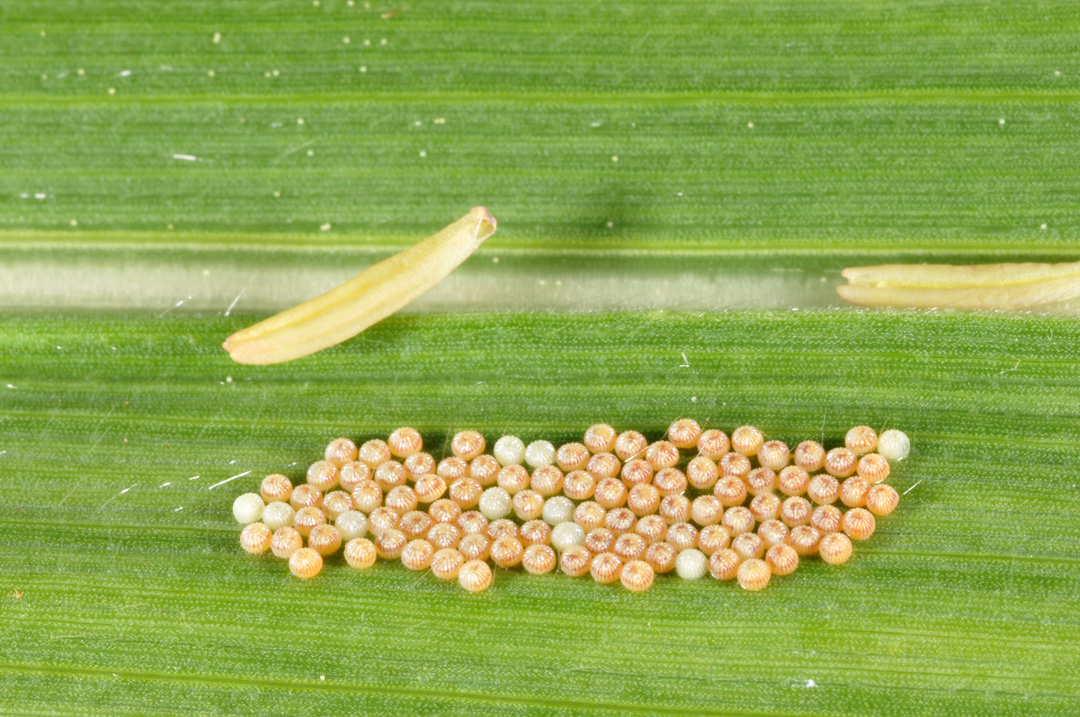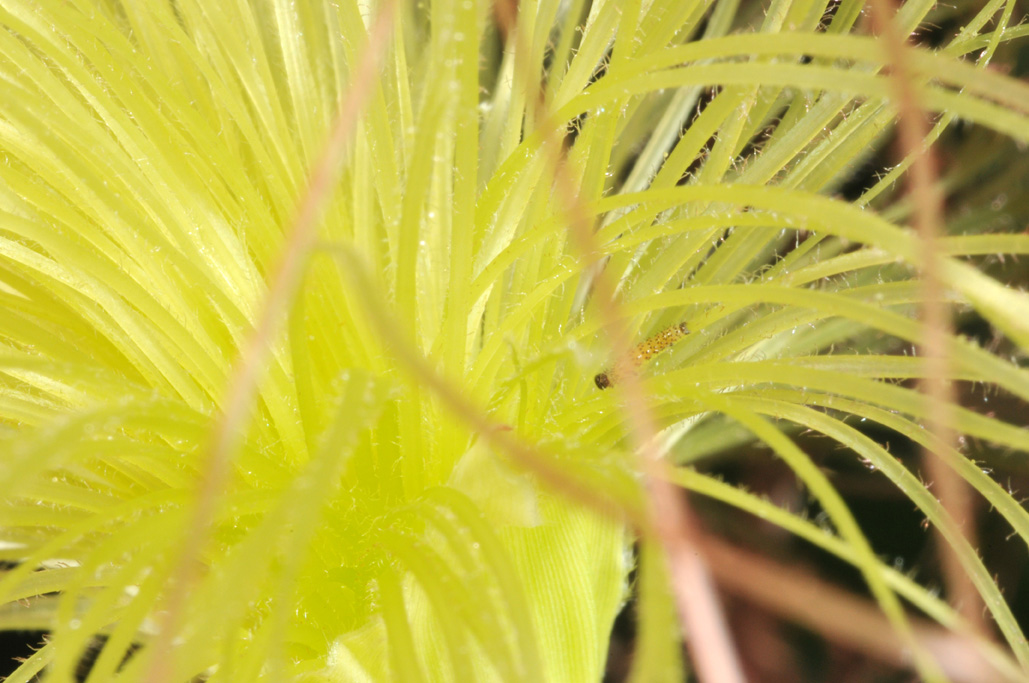The western bean cutworm (WBC) trapping season continues, and after a slow start, moth flights have rapidly increased in many northern Indiana county traps the past two weeks. With warm temperatures, egg development and hatch will happen within about 6-8 days after they are first placed by females. This will give little time for egg scouting. Unfortunately larval scouting is far more difficult, time-consuming and less reliable. In other words, some larvae have hatched and have already infested corn whorls, leaf axils, and/or ears. Control is very difficult at this point and those just looking for egg masses beginning now will likely be underestimating the population.

Hatching larvae often eat the eggshells, making detection while scouting more difficult. (Photo Credit: John Obermeyer)
However, it’s not too late! Although some eggs have hatched, our current period of increased moth activity represents the peak for egg-laying, as the vast majority of WBC eggs will be laid over the next 2 weeks. Use moth trap catches and recent field histories as your guide for prioritizing scouting areas – unlike armyworms and black cutworms, these moths don’t usually travel great distances before laying eggs. As you view the “Western Bean Cutworm Adult Pheromone Trap Report”, notice the variability of moth captures, even within close proximity to one another. Although the relationship between trap catches and damage is not particularly strong (i.e., high trap counts does not always mean high damage), traps are a good timing mechanism and presence/absence indicator. When they spike suddenly, it’s time to scout…for most that means now.
Pre-tassel corn is preferred by egg-laying females. Research conducted at the University of Nebraska has shown that larvae survive best in late whorl stage corn. This is likely because this synchronizes their development with the onset of pollen shed, and pollen is a key, high-protein food source for young larvae before they move into corn ears.
Scouting should begin once moths are being captured nightly. In five different areas of a field, inspect 20 consecutive plants for egg masses which are laid on the upper surface of the top leaves of corn and/or larvae that may have hatched and crawled to the whorl and begun to feed. Usually the newest, vertical leaf is the best place to look for egg masses. If 5% of plants have egg masses, the treatment threshold has been reached.
Young larvae need pollen to survive, and female moths are most attracted to cornfields that are just about to pollinate, although moths will lay eggs on whorl stage corn when pre-tassel/pollinating corn is not available. Larvae may initially be found in leaf axils, feeding on pollen that has accumulated there and can still be controlled with insecticides that trickle down into these areas, but only for a short time. After this they move into the developing ear via the silks and are invulnerable to foliar sprays.
Remember that this pest is resistant to the Cry1F insecticidal trait – found in the vast majority of “traited corn” planted in the state. So scouting and timely insecticide applications where needed are a must for most producers in WBC’s zone of infestation, primarily the northern tier of counties in Indiana.
VIDEO: Western Bean Cutworm Egg Masses & Young Larvae
VIDEO: Scouting Western Bean Cutworm Post-Whorl Corn





